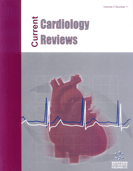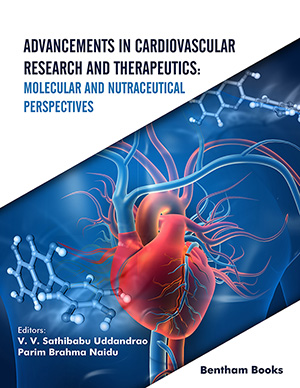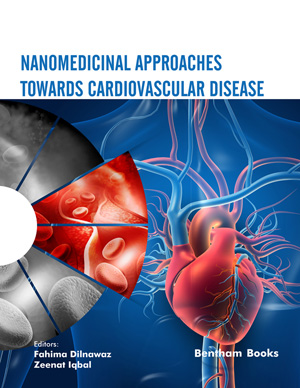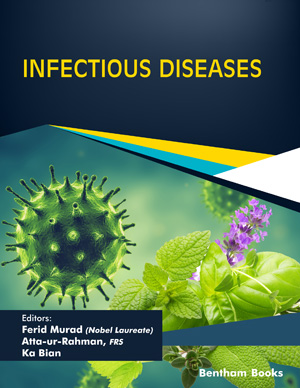[1]
Hamano H, Kawa S, Horiuchi A, et al. High serum IgG4 concentrations in patients with sclerosing pancreatitis. N Engl J Med 2001; 344(10): 732-8.
[2]
Khosroshahi A, Deshpande V, Stone JH. The clinical and pathological features of igg(4)-related disease. Curr Rheumatol Rep 2011; 13(6): 473-81.
[3]
James OG, Christensen JD, Wong TZ, Borges-Neto S, Koweek LM. Utility of FDG PET/CT in inflammatory cardiovascular disease. Radiographics 2011; 31(5): 1271-86.
[4]
Kasashima S, Kawashima A, Endo M, et al. A clinicopathologic study of immunoglobulin G4-related disease of the femoral and popliteal arteries in the spectrum of immunoglobulin G4-related periarteritis. J Vasc Surg 2013; 57(3): 816-22.
[5]
Agaimy A, Weyand M, Strecker T. Inflammatory thoracic aortic aneurysm (lymphoplasmacytic thoracic aortitis): A 13-year-experience at a German Heart Center with emphasis on possible role of IgG4. Int J Clin Exp Pathol 2013; 6(9): 1713-22.
[6]
Keraliya AR, Murphy DJ, Aghayev A, Steigner ML. IgG4-related disease with coronary arteritis. Circ Cardiovasc Imaging 2016; 9(3): e004583.
[7]
Matsumoto Y, Kasashima S, Kawashima A, et al. A case of multiple immunoglobulin G4-related periarteritis: A tumorous lesion of the coronary artery and abdominal aortic aneurysm. Hum Pathol 2008; 39(6): 975-80.
[8]
Urabe Y, Fujii T, Kurushima S, Tsujiyama S, Kihara Y. Pigs-in-a-blanket coronary arteries: A case of immunoglobulin G4-related coronary periarteritis assessed by computed tomography coronary angiography, intravascular ultrasound, and positron emission tomography. Circ Cardiovasc Imaging 2012; 5(5): 685-7.
[9]
Taylor AJ, Cerqueira M, Hodgson JM, et al. ACCF/SCCT/ACR/ AHA/ASE/ASNC/NASCI/SCAI/SCMR 2010 appropriate use criteria for cardiac computed tomography. A report of the American College of Cardiology Foundation Appropriate Use Criteria Task Force, the Society of Cardiovascular Computed Tomography, the American College of Radiology, the American Heart Association, the American Society of Echocardiography, the American Society of Nuclear Cardiology, the North American Society for Cardiovascular Imaging, the Society for Cardiovascular Angiography and Interventions, and the Society for Cardiovascular Magnetic Resonance. J Am Coll Cardiol 2010; 56(22): 1864-94.
[10]
Budoff MJ, Achenbach S, Blumenthal RS, et al. Assessment of coronary artery disease by cardiac computed tomography: A scientific statement from the American Heart Association Committee on Cardiovascular Imaging and Intervention, Council on Cardiovascular Radiology and Intervention, and Committee on Cardiac Imaging, Council on Clinical Cardiology. Circulation 2006; 114(16): 1761-91.
[11]
Pundziute G, Schuijf JD, Jukema JW, et al. Impact of coronary calcium score on diagnostic accuracy of multislice computed tomography coronary angiography for detection of coronary artery disease. J Nucl Cardiol 2007; 14(1): 36-43.
[12]
Ong TK, Chin SP, Liew CK, et al. Accuracy of 64-row multidetector computed tomography in detecting coronary artery disease in 134 symptomatic patients: Influence of calcification. Am Heart J 2006; 151(6): 1323.e1-6.
[13]
Miller JM, Rochitte CE, Dewey M, et al. Diagnostic performance of coronary angiography by 64-row CT. N Engl J Med 2008; 359(22): 2324-36.
[14]
Weber OM, Martin AJ, Higgins CB. Whole-heart steady-state free precession coronary artery magnetic resonance angiography. Magn Reson Med 2003; 50(6): 1223-8.
[15]
Sakamoto A, Nagai R, Saito K, et al. Idiopathic retroperitoneal fibrosis, inflammatory aortic aneurysm, and inflammatory pericarditis--retrospective analysis of 11 case histories. J Cardiol 2012; 59(2): 139-46.
[16]
Jahnke C, Paetsch I, Nehrke K, et al. Rapid and complete coronary arterial tree visualization with magnetic resonance imaging: Feasibility and diagnostic performance. Eur Heart J 2005; 26(21): 2313-9.
[17]
Ikutomi M, Matsumura T, Iwata H, et al. Giant tumorous lesions (correction of legions) surrounding the right coronary artery associated with immunoglobulin-G4-related systemic disease. Cardiology 2011; 120(1): 22-6.
[18]
Tanigawa J, Daimon M, Murai M, Katsumata T, Tsuji M, Ishizaka N. Immunoglobulin G4-related coronary periarteritis in a patient presenting with myocardial ischemia. Hum Pathol 2012; 43(7): 1131-4.
[19]
Jeudy J, White CS, Kligerman SJ, et al. Spectrum of coronary artery aneurysms: From the radiologic pathology archives. Radiographics 2018; 38(1): 11-36.
[20]
Cohen P, O’Gara PT. Coronary artery aneurysms: A review of the natural history, pathophysiology, and management. Cardiol Rev 2008; 16(6): 301-4.
[21]
Kouzu H, Miki T, Mizuno M, et al. Inflammatory myofibroblastic tumor of the heart. Overlap with IgG4-related disease? Circ J 2014; 78(4): 1006-8.
[22]
Kusunose K, Hotchi J, Takagawa Y, et al. Serial imaging changes during treatment of immunoglobulin G4-related disease with multiple pseudotumors. Circulation 2015; 131(21): 1882-3.
[23]
Patel R, Lim RP, Saric M, et al. Diagnostic performance of cardiac magnetic resonance imaging and echocardiography in evaluation of cardiac and paracardiac masses. Am J Cardiol 2016; 117(1): 135-40.
[24]
Sparrow PJ, Kurian JB, Jones TR, Sivananthan MU. MR imaging of cardiac tumors. Radiographics 2005; 25(5): 1255-76.
[25]
Rajiah P, Kanne JP, Kalahasti V, Schoenhagen P. Computed tomography of cardiac and pericardiac masses. J Cardiovasc Comput Tomogr 2011; 5(1): 16-29.
[26]
Sugimoto T, Morita Y, Isshiki K, et al. Constrictive pericarditis as an emerging manifestation of hyper-IgG4 disease. Int J Cardiol 2008; 130(3): e100-1.
[27]
Morita T, Izawa A, Hamano H, et al. Significant pericardial involvement of immunoglobulin G4-related disease. Ann Thorac Surg 2014; 98(2): e47-9.
[28]
Mori K, Yamada K, Konno T, et al. Pericardial involvement in IgG4-related disease. Int Med (Tokyo, Japan) 2015; 54(10): 1231-5.
[29]
Misawa Y. Immunoglobulin G4-related cardiovascular diseases. Ann Thorac Cardiovasc Surg 2017; 23(6): 281-5.
[30]
Maleszewski JJ, Tazelaar HD, Horcher HM, et al. IgG4-related disease of the aortic valve: A report of two cases and review of the literature. Cardiovasc Pathol 2015; 24(1): 56-9.
[31]
Yamauchi H, Satoh H, Yamashita T, et al. Immunoglobulin G4-related disease of the heart causing aortic regurgitation and heart block. Ann Thorac Surg 2013; 95(6): e151-3.
[32]
Cawley PJ, Maki JH, Otto CM. Cardiovascular magnetic resonance imaging for valvular heart disease: Technique and validation. Circulation 2009; 119(3): 468-78.
[33]
Stone JR. Aortitis, periaortitis, and retroperitoneal fibrosis, as manifestations of IgG4-related systemic disease. Curr Opin Rheumatol 2011; 23(1): 88-94.
[34]
Ozawa M, Fujinaga Y, Asano J, et al. Clinical features of IgG4-related periaortitis/periarteritis based on the analysis of 179 patients with IgG4-related disease: A case-control study. Arthritis Res Ther 2017; 19(1): 223.
[35]
Kasashima S, Kawashima A, Kasashima F, et al. Immunoglobulin G4-related periaortitis complicated by aortic rupture and aortoduodenal fistula after endovascular AAA repair. J Endovasc Ther 2014; 21(4): 589-97.
[36]
Nunez Fernandez MJ, Fachal Bermudez C, Duran Munoz D, et al. IgG4-related disease and isolated thoracic aortic aneurysm. VASA Zeitschrift fur Gefasskrankheiten 2014; 43(5): 385-9.
[37]
Perugino CA, Wallace ZS, Meyersohn N, Oliveira G, Stone JR, Stone JH. Large vessel involvement by IgG4-related disease. Medicine 2016; 95(28): e3344.
[38]
Ishida M, Miyamura T, Sato S, Kimura D, Suematsu E. Pulmonary arterial hypertension associated with IgG4-related disease. Intern Med (Tokyo, Japan) 2014; 53(5): 493-7.
[39]
Barp A, Fedrigo M, Farina FM, et al. Carotid aneurism with acute dissection: An unusual case of IgG4-related diseases. Cardiovasc Pathol 2016; 25(1): 59-62.
[40]
Sarac M, Marjanovic I, Bezmarevic M, Zoranovic U, Petrovic S, Mihajlovic M. An aortoduodenal fistula as a complication of immunoglobulin G4-related disease. World J Gastroenterol 2012; 18(42): 6164-7.
[41]
Danlos FX, Daoued-Keffi F, Rohmer J, et al. IgG4-related disease associated with renal microaneurysms and polycythaemia. Rheumatology (Oxford England) 2016; 55(2): 380-2.
[42]
Tajima M, Hiroi Y, Takazawa Y, et al. Immunoglobulin G4-related multiple systemic aneurysms and splenic aneurysm rupture during steroid therapy. Hum Pathol 2014; 45(1): 175-9.
[43]
Alba MA, Milisenda J, Fernandez S, et al. Small-vessel vasculitis with prominent IgG4 positive plasma cell infiltrates as potential part of the spectrum of IgG4-related disease: A case report. Clin Exp Rheumatol 2015; 33(2)(Suppl. 89): S138-41.




















